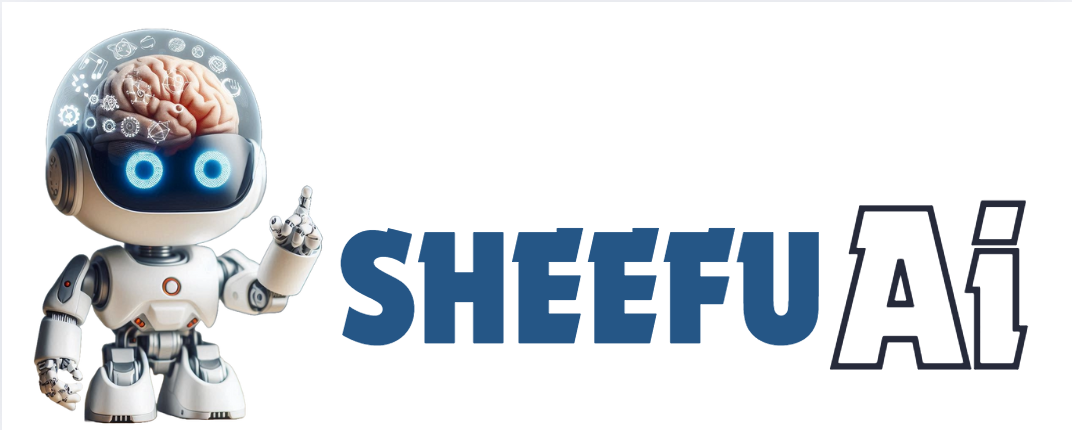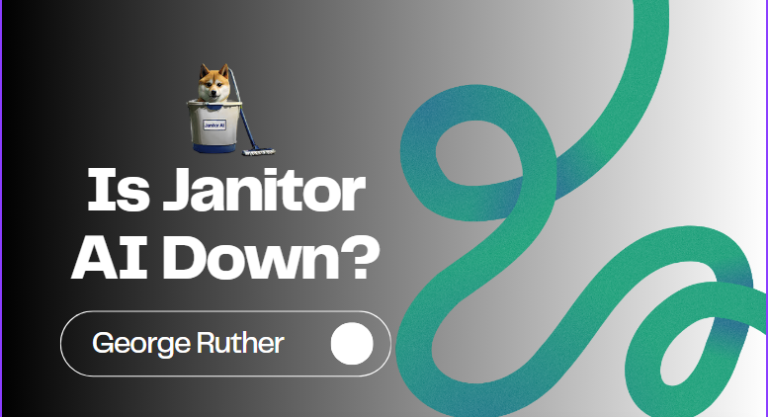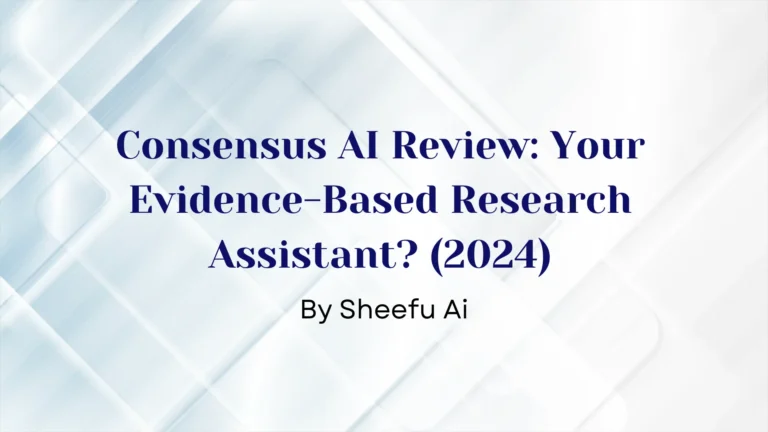In today’s fast-moving digital world, businesses are turning to intelligent bots to improve customer experiences and make their operations smoother.
Two of the most important types of bots are Geo bots and GPT bots.
Geo bots use real-time location data to help customers find their way or offer services based on where they are.
On the other hand,GPT bots use natural language processing (NLP) to have smart, human-like conversations with customers.
According to a report from Grand View Research, the chatbot market is growing fast. It’s expected to reach USD 1.34 billion by 2025, growing at a rate of 24.3% each year.
This shows just how much businesses are using bots like Geo and GPT to stay ahead. These AI bots are already improving customer service and helping businesses work more efficiently. Knowing how each bot works can help companies make better choices to grow and succeed.
Let’s dive deeper into how these bots work and why they matter.
What is a Geo Bot?
A Geo bot is a location-focused tool. It uses real-time location data to provide services based on where a person is. For example, if you are shopping in a mall a Geo bot can send you a message about discounts at stores nearby. Or, if you’re traveling in a new city, a Geo bot can help you find the quickest route to a landmark. Businesses use these bots to connect with customers based on their location and give them helpful, relevant information.
Example: A tourist visiting New York City might use a Geo bot to get directions to famous landmarks or learn about nearby restaurants offering deals.
What is a GPT Bot?
A GPT bot is an AI tool that uses natural language processing (NLP) to have human-like conversations with users. It can understand questions and respond in a way that feels natural. A GPT bot is great for answering customer questions, solving problems, and even creating content like product descriptions or emails. It’s useful for businesses that need to handle many different types of customer inquiries or tasks.
Example: A customer could ask a GPT bot about product details on an online store. The bot would provide the information in a natural conversation, just like a customer service representative would.
How Geo Bots Work
A Geo bot uses location data to help people based on where they are. It gets this information from sources like GPS, Wi-Fi, and cellular networks. By tracking a user’s location in real time, the bot can provide useful services or actions that depend on the user’s exact position.
For example a Geo bot might notify a traveler about a nearby gas station or a coffee shop while they are on a road trip. This makes the experience more personalized and relevant to their current needs.
Key Features and Capabilities
Geo bots have several important features that make them valuable for location-based tasks. Here are some key capabilities:
- Real-time tracking: The bot constantly updates the user’s location to provide accurate and timely responses.
- Geofencing: The bot can automatically send alerts or take actions when the user enters or leaves a certain area.
- Custom notifications: It sends messages that are relevant to the user’s current location.
- Data integration: The bot can connect with mapping, weather, or traffic services to give the user a full picture of their surroundings.
- Personalization: It makes recommendations based on the user’s behavior and preferences.
These features make Geo bots powerful tools for creating personalized and efficient experiences based on a person’s location.
Real-World Applications of Geo Bots
Geo bots are transforming industries by using real-time location tracking to improve everyday operations. By integrating location-based data into business processes Geo bots help companies provide better services and streamline their operations. Below are some practical examples of how Geo bots are used in different industries.
1.Geo Bots in Search and Rescue
Geo bots are playing an important role in search and rescue operations. They help rescue teams by providing real-time location tracking and pinpointing exact locations. During emergencies like hurricanes Geo bots help teams coordinate their efforts and find people who are stranded. This saves valuable time and improves rescue operations.
Example: During a hurricane Geo bots can track the movement of rescue teams and people who need help. This allows them to quickly reach those in danger.
2.Environmental Monitoring with Geo Bots
Geo bots are also used for environmental monitoring. They help track things like air quality, wildlife movements, and water levels. For example, Geo bots can be used to check pollution levels in cities or monitor water levels in areas at risk of flooding. This helps researchers take action to protect the environment.
Example: Environmental researchers use Geo bots to detect harmful pollutants in cities. This allows them to warn the public and take steps to reduce pollution.
3.Geo Bots in Autonomous Vehicles
Geo bots are crucial in autonomous vehicles like self-driving cars. They use real-time location tracking to guide vehicles and ensure safe driving. Geo bots help these cars navigate, avoid obstacles, and find the best route to their destination. Tesla’s autopilot feature is a great example of how Geo bots are used to guide cars.
Example: In self-driving cars Geo bots help the vehicle detect obstacles and adjust its route to keep passengers safe.
4.Geo Bots in Logistics and Supply Chain Management
Geo bots are also improving logistics and supply chain management. These bots help companies track shipments and deliveries in real-time. They help businesses like Amazon provide customers with up-to-date information about their deliveries and ensure efficient route planning.
Example: Geo bots track packages as they are delivered to customers. This helps companies give accurate delivery updates and improve delivery efficiency.
Now that we have learned about Geo Bots.
Lets know about gpt bots. What are they, how they work and real life applications.
How GPT Bots Work
A GPT bot (Generative Pre-trained Transformer) is an advanced AI conversation tool powered by cutting-edge AI technology. It uses natural language processing (NLP) to understand and generate human-like conversation. These bots learn from huge datasets like conversations, articles, and documents. This helps them identify patterns and understand the context of what is being said.
By using this knowledge, a GPT bot can understand user inputs, figure out the user’s intent, and respond in a natural, conversational way.
For example, a GPT bot can assist a business by answering customer questions or writing product descriptions.
Over time, GPT bots get smarter. They learn from the data they interact with, improving their ability to handle more tasks. This self-learning ability makes them useful for many tasks, from real-time user assistance to content generation.
Key Features and Capabilities of GPT Bots
Here are the standout features that make GPT bots a powerful tool for businesses:
- Natural Language Processing (NLP): They understand language and respond just like humans do.
- Contextual Understanding: These bots remember past conversations and provide replies based on that context.
- Scalability: GPT bots can handle many interactions at once, making them perfect for busy environments.
- Multilingual Support: They can communicate in different languages, helping businesses serve customers around the world.
- Continuous Learning: GPT bots improve over time by analyzing their interactions, making them smarter with each conversation.
These capabilities make GPT bots an important tool for industries that need smart and efficient automation.
Real-World Applications of GPT Bots
GPT bots are changing how businesses operate in many areas. Here are some of the most common ways these bots are used:
1.Customer Service Bots
GPT bots are ideal for customer service bots. They can handle routine customer questions, provide help with troubleshooting, and guide users through different processes.
For example, companies like Shopify use GPT bots to handle FAQs. This lets human agents focus on more complex tasks and improves efficiency and customer satisfaction.
2.Content Creation Bots
Businesses use GPT bots for content generation. These bots can create a wide variety of content, from writing blog posts to crafting email campaigns.
For example, e-commerce websites use GPT bots to write personalized product descriptions based on customer preferences. This helps businesses keep their content fresh and relevant.
3.Marketing Automation with GPT Bots
Marketing is another area where GPT bots shine. They help businesses automate their marketing efforts by generating personalized content for their audience. This keeps customers engaged without taking up too much time.
4.Language Translation Bots
GPT bots are also used for language translation. They can quickly and accurately translate text, making them valuable for businesses with a global presence.
For example, companies that operate in multiple countries use GPT bots to translate customer messages, ensuring smooth communication with users from different regions.
5.Data Analysis Bots
Researchers and businesses use GPT bots for data analysis. These bots can quickly go through large amounts of data, summarize it, and present the most important information.
For example, in healthcare, GPT bots help professionals analyze medical research papers. This speeds up the process and helps them make faster decisions.
Comparison of Geo and GPT Bots
Geo bots and GPT bots are designed to solve different problems and serve different purposes. Both offer unique advantages in their fields.
Geo bots excel at using location-based data to solve real-world problems. They help businesses offer personalized services based on where a customer is physically located.
On the other hand, GPT bots specialize in understanding and generating human-like language. They are great for having conversations and helping with tasks that require understanding of words and context.
Geo vs GPT Bots
Let’s compare the bot functionalities of Geo bots and GPT bots. Both bots have key strengths, but they shine in different areas.
Understanding the Physical World with Geo Bots
A Geo bot uses real-time location tracking to interact with the physical world. It collects and analyzes location-based data to offer useful services in real time.
Here are some key features of Geo bots:
- Real-time Location Tracking: This feature allows Geo bots to track a user’s location live using GPS or cellular signals. This is useful for guiding customers or offering location-specific services.
- Geofencing: Geo bots can take action when a user enters or leaves a specific area. For example, they might send an alert about a store promotion when someone enters a shopping area.
- Navigation and Routing: Geo bots help users find the best routes for travel. They offer directions based on real-time traffic or road conditions.
- Local Data Integration: Geo bots can display nearby points of interest, such as restaurants or landmarks, based on the user’s location.
- Environmental Monitoring: Geo bots monitor things like weather, traffic, or terrain changes. This helps businesses make informed decisions, especially in industries like logistics.
Example: A Geo bot used in logistics can track real-time location tracking to optimize delivery routes, reduce fuel consumption, and avoid delays caused by traffic.
Processing and Understanding Language with GPT Bots
GPT bots are experts in natural language processing (NLP). They understand and respond to human language, making them great at answering questions and handling conversations. Their key functionalities include:
- Conversational Memory: GPT bots remember past conversations to give contextually relevant replies. This makes interactions feel more personal and helpful.
- Text Generation: These bots can create a wide range of written content, from answering queries to writing detailed descriptions.
- Contextual Conversation: GPT bots understand the meaning behind the words and provide intelligent responses based on that understanding.
- Multilingual Support: GPT bots can communicate in different languages, making them useful for global businesses.
Real-time Location Tracking vs Natural Language Processing
In the Geo vs GPT bots comparison, Geo bots focus on tracking physical locations and interacting with the real world through data, while GPT bots specialize in understanding and generating human-like conversations using language.
Both have their strengths but serve different needs. If you need a bot to track people’s locations and offer location-based services, Geo bots are the way to go. If you need a bot that can hold intelligent conversations and process natural language, GPT bots are the right choice.
Limitations and Challenges
While both Geo bots and GPT bots offer great value, it’s important to understand their limitations. Knowing these challenges helps you make better decisions on which bot to choose for your business.
Geo Bot Limitations
Geo bots are powerful tools, but they come with a few limitations. Understanding these will help you decide when Geo bots are the right choice.
- Signal Dependency: Geo bots rely on strong GPS or network signals to work accurately. If the signal is weak or there is no network connection, the bot may struggle to provide accurate information.
- Limited Scope: Geo bots focus mostly on location-based tasks. They are not designed to handle other types of tasks like answering questions or providing general information. This makes them less useful for businesses needing a wider range of services.
- Geo Bot Privacy Concerns: Many users are concerned about sharing their location data. Since Geo bots track a person’s location, some may hesitate to use them due to privacy risks.
- Integration Challenges: It can be difficult to connect Geo bots with other systems like mapping or data services. This can require a lot of technical work to get the system working smoothly.
- High Resource Usage: Geo bots need significant computing power and data to track locations in real time. This can lead to higher costs and energy consumption.
GPT Bot Limitations
GPT bots also come with their own set of challenges. Here are some of the limitations to consider when using GPT bots.
- No Real-World Interaction: Unlike Geo bots, GPT bots cannot process physical data like location. They can’t track where people are or give real-time updates based on physical events.
- Bias in GPT Bots: GPT bots learn from the data they are trained on. If the data has any biases, the bot may also reflect those biases, leading to inaccurate or unfair responses.
- Challenges with Complex Queries: GPT bots may struggle with highly technical or specific questions. They are great for general tasks but may not always provide the best answers for niche topics.
- Computational Demands: GPT bots require a lot of computing power to function. The process of training and running these bots can use a lot of resources, making them expensive and energy-intensive.
- GPT Bot Input Dependency: The quality of responses from GPT bots depends heavily on the clarity and quality of the user’s input. If the input is unclear or vague, the bot may struggle to provide accurate answers.
Which Bot is Right for You?
Choosing between a Geo bot and a GPT bot depends on your business needs. Each bot serves different purposes and works best in different situations.
A Geo bot is great for businesses that need location-based services. For example, if you run a logistics business, a Geo bot can optimize delivery routes by tracking real-time locations. This is especially useful in industries like retail, travel, and logistics, where location plays a big role in operations.
On the other hand, a GPT bot is better for tasks that require natural language understanding. It’s ideal for businesses that focus on customer service, content creation, or research. GPT bots excel at holding intelligent, personalized conversations with users.
For example, if your business focuses on customer service, a GPT bot can provide support by answering questions and helping customers with their needs. It can also help create content like product descriptions or blog posts.
In short, if you need to help customers with real-world tasks like navigation or delivery, a Geo bot is the right choice. But if your focus is on communication and understanding customers’ questions, a GPT bot would be more suitable.
Business Use Cases for Bots
- AI bots for logistics: Geo bots can help with delivery management and route optimization.
- AI bots for customer service: GPT bots can manage customer inquiries, provide assistance, and handle repetitive tasks.
The Future of Geo and GPT Bots
The future of Geo bots and GPT bots lies in their ability to work together. By combining location-based data with advanced conversational intelligence, these bots can create powerful systems. The synergy between Geo bots and GPT bots opens up new possibilities, offering solutions that are both dynamic and responsive.
Combining Forces
The synergy between Geo and GPT bots creates a wide range of new opportunities. By integrating their strengths, businesses can improve real-time decision-making and provide more interactive services. This combination is set to revolutionize how users interact with AI-powered systems.
Enhanced Search and Discovery
When Geo bots and GPT bots work together, they can transform how users search for and discover nearby services.
For example, a Geo bot can track your location in real-time, helping you find nearby places like restaurants or stores. Then, a GPT bot can facilitate a conversation, helping you narrow down your preferences, such as the type of food, price range, or atmosphere.
This bot integration makes searches more personalized and interactive, improving the decision-making process and offering a smoother user experience.
Whether you’re searching for a quiet café to work or a fun spot for family dining, this integration provides location-aware AI that assists with personalized searches and offers intelligent recommendations.
Advanced Autonomous Systems
In industries like autonomous systems, combining Geo bots and GPT bots enhances functionality. For example, in self-driving cars, a Geo bot can continuously monitor real-time traffic data, road conditions, and navigation routes. Meanwhile, the GPT bot can interpret voice commands and provide tailored suggestions or updates during the journey.
This AI-powered automation creates a seamless experience for both drivers and passengers. A self-driving car could use a Geo bot to ensure accurate location data, while the GPT bot can engage passengers by answering questions, providing updates, or offering route alternatives.
Together, this integration ensures intelligent route optimization and human-like interactions, improving the overall travel experience.
Personalized User Experiences
When it comes to personalized experiences, combining Geo bots and GPT bots creates powerful interactions that feel natural and helpful.
For example, a fitness app with Geo bots can track your running route in real-time. As you run, the Geo bot monitors your location and progress. At the same time, a GPT bot offers real-time feedback, motivation, or even suggests new routes based on your performance.
This combination of AI in fitness tracking provides a personalized recommendation that adapts to your needs. Whether you’re looking for a faster pace or new routes to explore, the bots work together to give you a user-centered AI experience.
From fitness apps to travel planning, the possibilities for personalized experiences are endless. By integrating Geo bots for location tracking and GPT bots for conversation, users get a more customized and engaging experience that evolves with their needs.
Why Synergies Between Geo and GPT Bots Matter
The integration of Geo bots and GPT bots brings a unique advantage. It allows businesses to offer highly interactive and personalized services. This synergy is especially important for industries that rely on providing real-time, adaptive solutions to customers.
Conclusion
After exploring the strengths and limitations of Geo bots and GPT bots, it’s clear that both play a significant role in shaping the future of AI-powered solutions. While Geo bots excel in location-based tasks, offering real-world intelligence, GPT bots shine in natural language understanding and personalized interactions. Both have their own unique advantages depending on your business needs. For example, if your focus is on real-time location tracking and logistics, Geo bots are the way to go. However, if customer service and content generation are your main priorities, GPT bots will serve you well.
As we move forward, the real power lies in combining the two. By integrating Geo bots for location awareness and GPT bots for human-like conversations, businesses can create solutions that are both dynamic and responsive. I believe that leveraging both technologies can unlock new opportunities and streamline operations for businesses. With platforms like BotPenguin, businesses can start integrating these advanced tools easily. Don’t miss out on the future of AI-powered automation—the possibilities are endless when you bring these two bots together.
Frequently-Asked-Questions(FAQs)
In which applications is a Geo bot better than a GPT bot?
Geo bots excel in applications that require location-based actions like logistics tracking, proximity marketing, and real-time navigation, offering immediate and precise location updates.
What’s the advantage of using Geo and GPT bots together instead of separately?
Using Geo and GPT bots together enhances user experiences by combining real-time location data with conversational AI, making it easier to guide customers to nearby locations while answering their questions.
Which industries benefit the most from Geo bots?
Geo bots are invaluable in industries like logistics, retail, travel, and autonomous vehicles, providing critical functions like real-time tracking, route optimization, and geofencing for smooth operations.
How do GPT bots enhance customer service?
GPT bots provide quick, human-like responses to customer inquiries, enabling businesses to handle multiple conversations simultaneously, streamline support, and reduce response times.
What are the limitations of Geo bots?
Geo bots depend on strong GPS or network connectivity for accuracy. They also face privacy concerns due to location data collection, requiring clear policies and user consent.
Should I block GPT bots from my website?
Blocking GPT bots depends on your business needs. While they automate tasks and improve engagement, some websites may restrict them for privacy or exclusivity reasons.
Can Geo and GPT bots improve personalized marketing?
Yes! Geo bots help identify user locations, and GPT bots craft personalized messages, making marketing campaigns more relevant and time-sensitive, such as offering discounts based on a customer’s proximity to a store.
What are the benefits of Geo and GPT bots in eCommerce?
In eCommerce, Geo bots enhance delivery tracking and location-based offers, while GPT bots provide round-the-clock support and personalized product recommendations, improving overall customer satisfaction.



